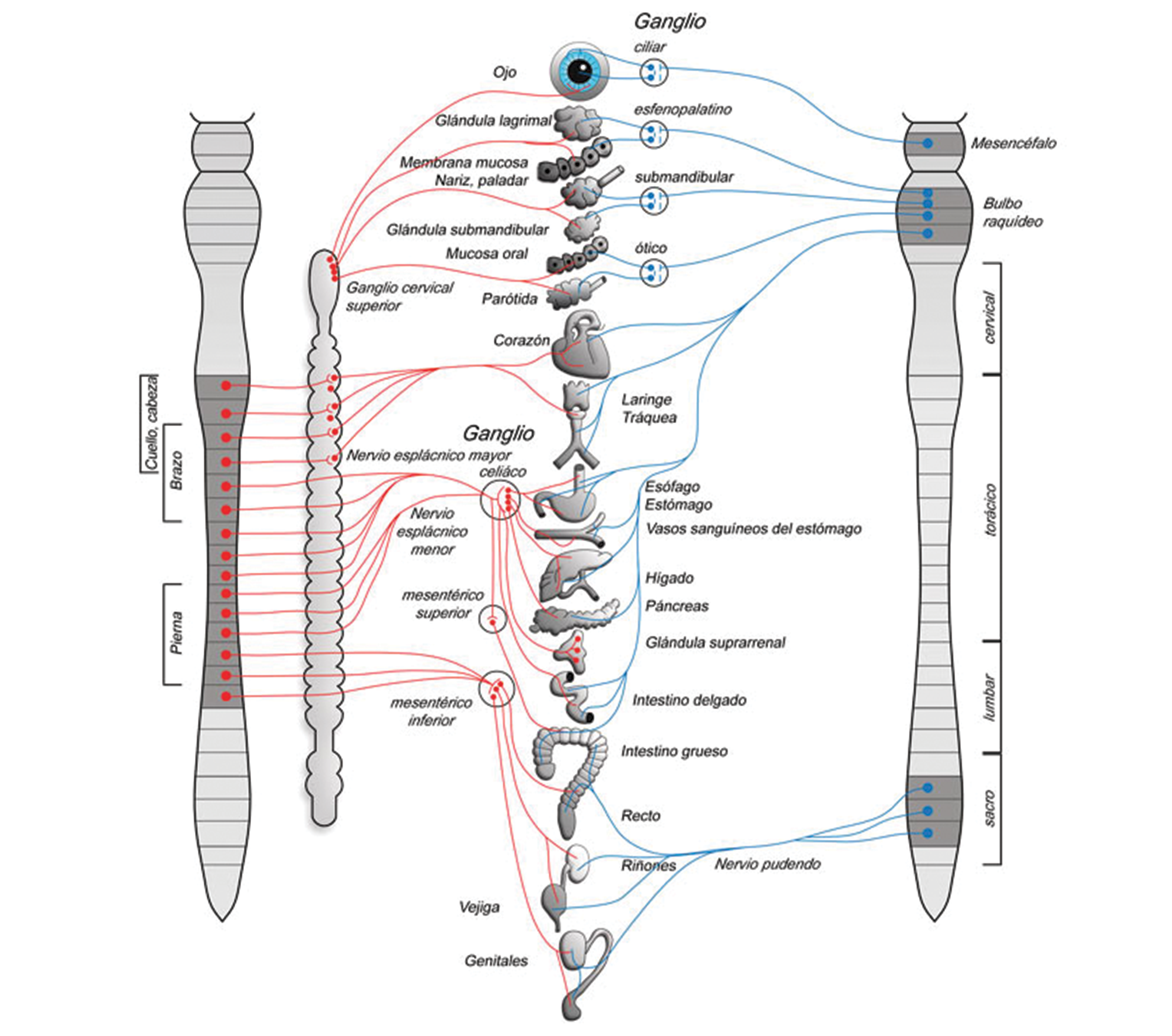
Benefits of HRV analysis
HRV measurement and HRV interpretation for therapy progress control, as stress load check or for prevention
“Which therapeutic measures or medications measurably improve my heart rate variability? How does my autonomic nervous system react to my lifestyle and daily stresses? What is the current regulatory state of my higher-level control and regulatory center ANS?”
These and other questions can be answered quickly with the measurement and evaluation of heart rhythm variability.
The worldwide scientifically recognized HRV analysis quickly and easily shows the regulatory state of our autonomic nervous system (ANS). The two main nerves of the ANS – sympathetic and parasympathetic (also called vagus) – form a higher-level control center in the body that controls and regulates subordinate processes and organs down to the cellular level in the body. These processes include: Blood pressure, respiratory rate, heart rate, immune system, endocrine system, digestive system and energy provision.
HRV analysis for measuring and evaluating heart rate variability is particularly suitable for regular health checks, stress load checks, progress monitoring and therapy control. Athletes can better control their training load with HRV analysis Studies show that the performance output is higher in athletes compared to lactate-based training control when training control is performed with HRV. With an individual norm value calculation, monitoring becomes easier than ever. Regular and time-consuming lactate tests are now a thing of the past.
Therapy progress monitoring is also playing an increasingly important role. This makes it possible to check which therapies, medications or other interventions result in an improvement – whether for cardiovascular diseases, COPD, macular degeneration, diabetes, high blood pressure or other complaints and diseases.
The HRV analysis is performed at rest and takes about 4 minutes as a short measurement or about 8 minutes as a normal measurement. The stored standard values are based on scientific evaluation and parameters of large HRV studies. With the traffic light colors green, yellow and red, it is quickly and reliably recognized in which range the own HRV parameters lie.
HRV analysis is firmly established in many guidelines for physicians and therapists and is the gold standard in medicine worldwide.

HRV: Health/Therapy Monitoring
“When a higher-level control and regulatory center such as the autonomic nervous system controls and regulates subordinate systems and organs down to the cellular level, the functional status of the higher-level control system ANS is the most important diagnostic measurement”
The autonomic nervous system continuously controls all organs and cells with its two main nerves sympathetic (tension) and parasympathetic (relaxation).
If a stress or permanent stress disorder has been identified by the HRV analysis, the primary goal of any further action should be to find and eliminate the cause of the disorder – preferably in a biological holistic way!
A special advantage of the HRV analysis is the control of the applied therapies or medications (therapy control). The heart rate variability as a measurand is optimally suited to check any therapy procedures for their effectiveness, no matter whether conventional or naturopathic therapies.
The HRV analysis is a worldwide scientifically recognized diagnostic procedure, which is increasingly used by sports physicians, sports scientists, therapists, doctors, alternative practitioners and clinics.
Comparative measurements are clearly displayed and show the course over days, weeks or years.
With the HRV analysis, sensitive and subtle naturopathic therapy methods can also be effectively and safely tested for their effects!
The variety of therapies has increased enormously in recent decades. It is therefore all the more important to find therapy methods that are fast, effective, have few side effects and are inexpensive. Do not always rely on “faith”, “dogmas” or the “experts”, but become your own expert with the HRV analysis.
More professional and scientific information on heart rate variability and HRV analysis from a therapeutic point of view can be found on this external website (www.vnsanalyse.de) in German and English.
HRV in sports and professional sports
HRV measurement and HRV evaluation for amateur, semi professional and professional athletes
“How well has my body recovered from yesterday’s training stress? Can I go full throttle again today and train intensively? Or should I better choose a normal to calmer training intensity to reduce the risk of “open window / overtraining?”
Since the year 2000, more and more sports science studies have shown that the performance output of athletes is higher when training control is performed with HRV analysis instead of lactate-based training control.
HRV analysis is suitable for amateur athletes, ambitious athletes, competitive athletes, professionals and coaches. With an individual norm value calculation, training control and monitoring has never been easier. Regular and time-consuming lactate tests are now a thing of the past when it comes to the regeneration of the entire organism.
HRV describes the heart’s ability to constantly change the time interval from one heartbeat to the next and thus flexibly adapt to changing challenges. It is a measure of the general adaptability of an organism. It is controlled by activating the sympathetic nervous system (in the sense of tension) and the parasympathetic nervous system (in the sense of recovery). The autonomic nervous system is responsible for accelerating or decelerating the heartbeat (Shaffer et al., 2014; McCraty & Shaffer, 2015). It is calculated from the millisecond intervals between a person’s heartbeats. The more variable the heartbeat, the healthier the organism.



